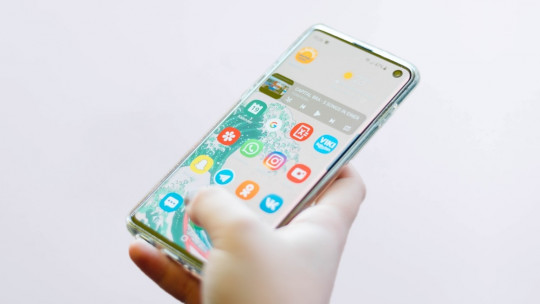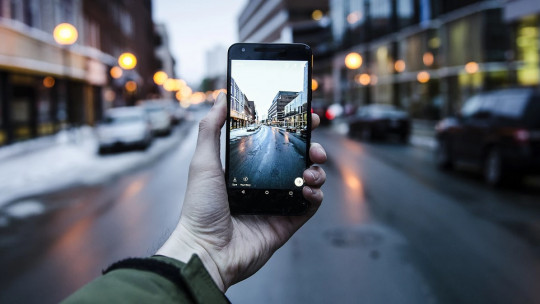
We all communicate daily with other people, and in different ways. We do it even in the absence of oral language (think, for example, of some children with autism, who use alternative communication systems).
Through communication we express ideas, feelings, desires, emotions… that is why it is essential to live in society. But… is communication always a clear and fluid process? Does the message always adequately reach its recipient(s)? Well the truth is that no, and in this article we bring you the explanation: The barriers to communication
Here we will see what these consist of, what types of communication barriers exist, how they can alter the transmission of a message, how to detect them and how to combat them.
What do we understand by communication?
Surely we all know approximately what communication consists of. When we hear this word, we generally think of people who talk to each other, who write to each other, who use words but also their bodies to express themselves, etc. That is, we imagine a more or less fluid conversation and the exchange of ideas that occurs through it.
In more technical terms, we can say that communication is the process that allows transmitting and receiving messages (information, ideas…). Through this process, two or more people relate through messages that flow back and forth through a channel (for example the air, in oral communication).

However, communication is not always fluid, clear and precise, but many times the message is distorted or deformed, not reaching the receiver adequately (or not being transmitted adequately from the sender). When this occurs, it means that communication barriers are operating, which are nothing more than interferences or obstacles that occur in it. That is why every context in which correct communication is encouraged, the existence of these obstacles must be taken into account in order to be able to quickly identify them when they occur, and also to adopt communication strategies that serve to prevent these problems
Communication barriers: what are they?
Communication barriers, also called interferences, consist of obstacles that make it difficult for the message to arrive in a communicative process. This definition is very broad precisely because the nature of communication barriers is very flexible and changing as communication experts and social psychologists know well.
We must keep in mind that although we take for granted that the possibility of transmitting and receiving messages is within our reach, this is only a constant in our daily lives because the Homo sapiens It is an extraordinarily social species, not because there are a series of natural laws that ensure we can always communicate and under optimal conditions. We are good at communicating, but That does not imply that the world works in our favor to constantly optimize these exchange and information processes
Thus, through these barriers, messages can be distorted or distorted, and not adequately reach their recipient. These barriers are located between the sender and the receiver of the message.
On the other hand, communication barriers can be of different types, as we will see below. However, although they present different characteristics, What all of them share is that they interfere with the correct transmission or arrival of the message
The result is, as we have seen, a fragmented message (partially or totally), distorted, incongruent, meaningless, altered or deformed.
The most important types of communication barriers
There are different types of communication barriers, depending on their characteristics. Let’s see them:
1. Semantic barriers
The semantic barriers They are related to the meaning of the words In this way, these types of barriers explain why we do not understand a word, a phrase or a speech. That is, they make it difficult for us to understand a message or give it meaning. Thus, they would act when, for example, the receiver does not correctly interpret the message transmitted by the sender.
On the other hand, if as receivers, we use a word with a meaning that does not really correspond to it, we are producing a semantic barrier; This specific case is called “change of meaning.”
2. Psychological barriers
Communication barriers can also be psychological; These have to do with the specific psychological situation of the sender or receiver of the message. So, These types of barriers are also related to the emotional states of the sender and/or receiver which can alter the message.
On the other hand, they also have to do with the sympathy or rejection that we have for the sender or receiver, which can influence how we receive or interpret the message.
Finally, prejudices also play a causal role in these types of communication barriers, since they influence how we see others and how their message reaches us.
3. Physiological barriers
Another type of communication barriers are physiological barriers. These, like all communication barriers, make it difficult or prevent the message from being transmitted clearly and accurately, but in this case it is due to certain physiological alterations on the part of the sender or receiver
That is, if one of them (or even both) are in an altered state, at a physiological level (for example drunk, upset, confused, sleepy…), this will alter the emission and/or reception of the message, which will be distorted.
4. Physical barriers
The physical barriers are, perhaps, the most obvious. These are all those circumstances of the context or environment that make fluid and clear communication difficult. We are talking, for example, about: noise, lack of light, excessive distance between interlocutors, problems in the means used to communicate (television, telephone, mobile…), etc.
It is in this type of communication barriers that our biological limitations are most evident: we are a terrestrial species, diurnal and fundamentally guided by sight and hearing, so at night we communicate worse (we find it difficult to read lips if there is little light) and underwater we can only rely on gestures (not like other mammals that have evolved to use very rich and nuanced methods of underwater communication, such as dolphins and whales). In the same way, we cannot rely much on smell to communicate, something that animals that are accustomed to living close to the ground or in areas with dense vegetation do.
5. Administrative barriers
Administrative barriers are those that have to do with the channels through which the message is transmitted in a communicative process, as well as with organizational structures or planning in a communicative act
To give us a clearer idea, it would be, for example: information overload, information loss, lack of planning, semantic distortions, impersonal communication…
How to detect communication barriers?
It is not always easy to detect when communication is being altered or distorted. That is to say, when the message is not being transmitted, understood or received properly Sometimes the interferences that occur in a communication process are subtle, and other times, more obvious.
Some elements that we can take into account when detecting these barriers are: the frequency of silences in the communicative act, the appearance or not (and their frequency) of unfinished sentences, the tone of voice, non-verbal language, the way of expressing…
How to overcome these barriers?
There are different ways to overcome or combat communication barriers, and Each person will use the technique that best suits them or best suits what they need, according to their context
The ideas that you will see below can be applied whether we are senders or receivers of the message (each technique will be put into practice at the appropriate time), they are:








